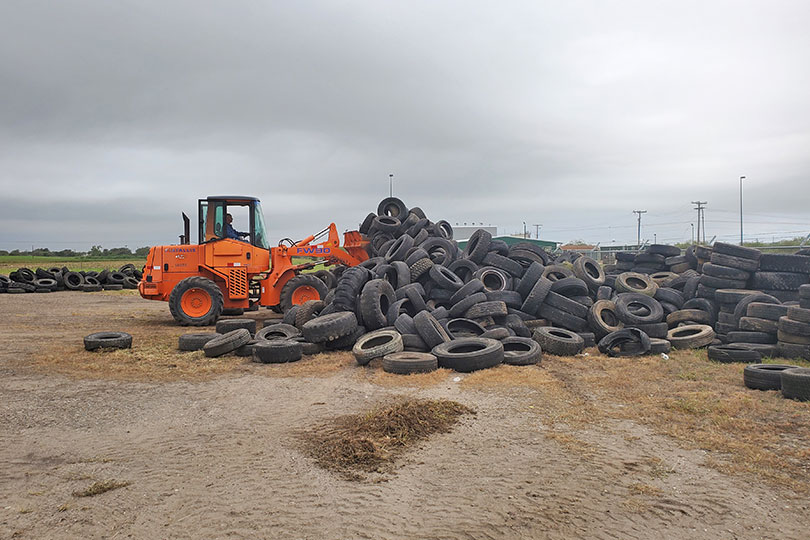By Julie Tomascik
Editor
In recent years, used tire disposal costs have increased significantly. To add to that, San Patricio County doesn’t accept used tires in pickup services or provide drop off points in the precinct or city yards. That led to more tires being dumped illegally or left in piles on private property.
So, San Patricio County Farm Bureau (CFB) collaborated with the County Commissioners Court to host a Used Tire Drive—a much-needed service for citizens across the county.
This was the first-of-its-kind landmark partnership for the two entities.
“We saw a problem of used tires being discarded on our rural roadsides, drainage ditches and vacant properties. Plus, farmers and ranchers also had tires and only limited proper disposal options,” Collin Chopelas, San Patricio CFB president, said. “Our used tire event provided a service to farmers, ranchers, landowners, the county and all residents of our communities.”
A San Patricio CFB subcommittee identified the needs, developed a plan and sought volunteers to help with the event. They contacted a local recycling facility and discussed splitting the costs with the county.
San Patricio CFB provided three trailer trucks, and the County Commissioners Court provided the equipment and operators to load the tires.
“Our county Farm Bureau leaders identified a problem and worked with city and county leaders to find a workable solution,” Chopelas said. “It was really successful. Working together, we were able to efficiently handle a large number of used tires in a very short period of time.”
The groups collected over 200 large tractor tires and over 1,300 car and truck tires.
It is now scheduled as an annual fall event.
“It’s a beneficial event for everyone involved, and many community leaders and officials were quick to recognize that,” Chopelas said. “Used tires can stack up around the farm, and oftentimes, people use rural roads to dump their car and truck tires. This event is hopefully encouraging people in our communities to keep our right of ways cleaner.”
When the tires were removed, Chopelas noted other debris was easier to clean up along the road, on private property and on farms, which helped improve the appearance of the rural areas.

